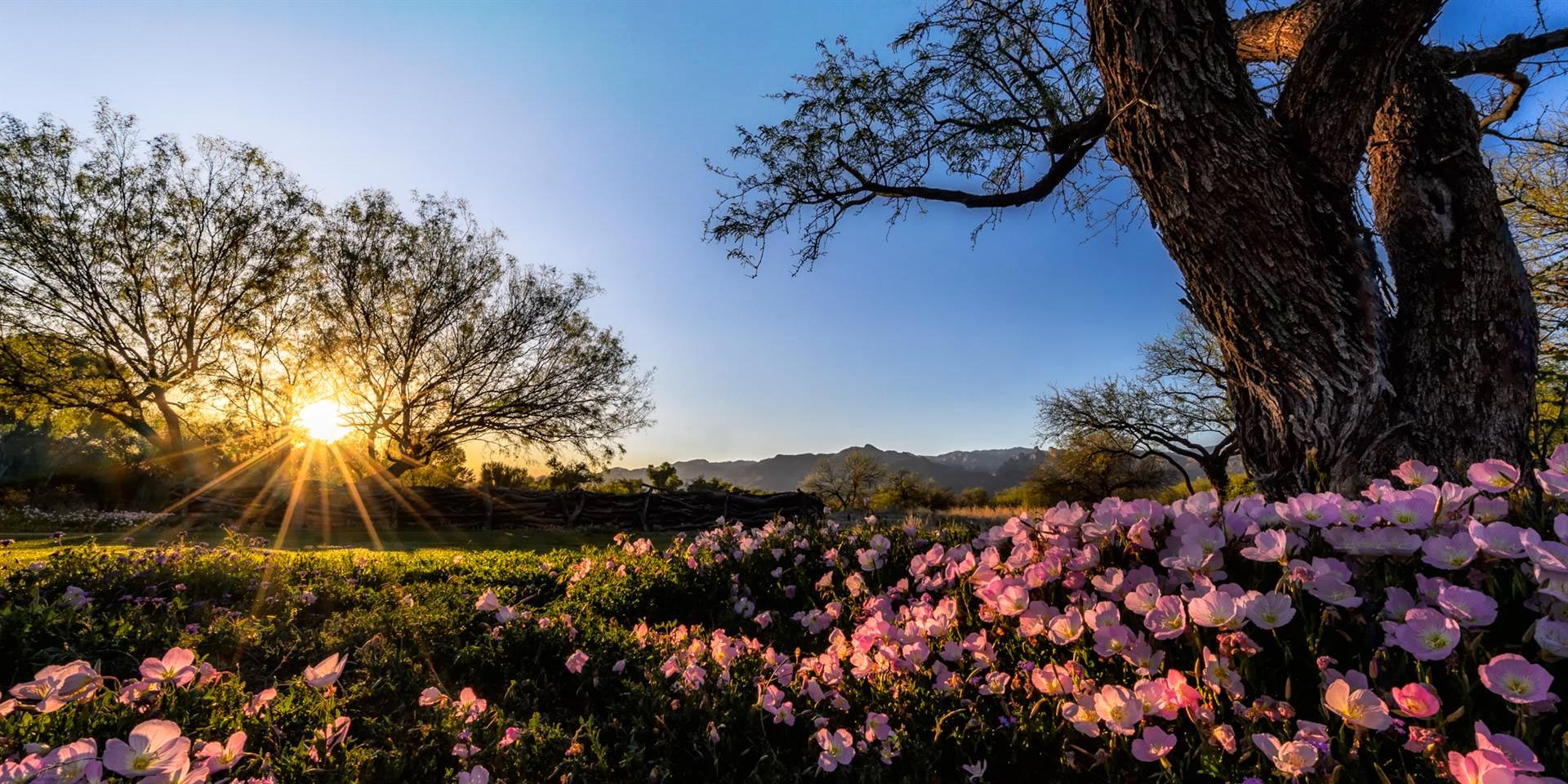Wild Ride on a Roller Coaster, Spring 2023, Part 3
Posted Jun 05, 2023
What an incredible spring this has been and my story continues to the east to the Rincon Mountain foothills, March, April, and May and south to Santa Cruz County, May.
Throughout February and March, the Rincon foothills were rather drab compared to Picacho Peak and the Watermans. A hard freeze during the winter had killed the tops of the brittlebush, so they had to resprout new buds before they could bloom. But snow in early March gave a nice boost to seedlings, including plants in the mustard family. Gordon’s bladderpod (Physaria gordonii), western white bladderpod (Physaria purpurea), and jewel weed (Streptanthus carinatus arizonicus) were blooming in abundance by early April.
But something was missing. There were almost no spring native bees. Andrena prima is an early native bee that specializes on the bladderpods. In previous years of good blooms, there had been dozens, if not hundreds, of these red and black bees in Colossal Cave Mountain Park. This year, I saw a total of only three Andrena prima bees over weeks of checking several miles of trails.
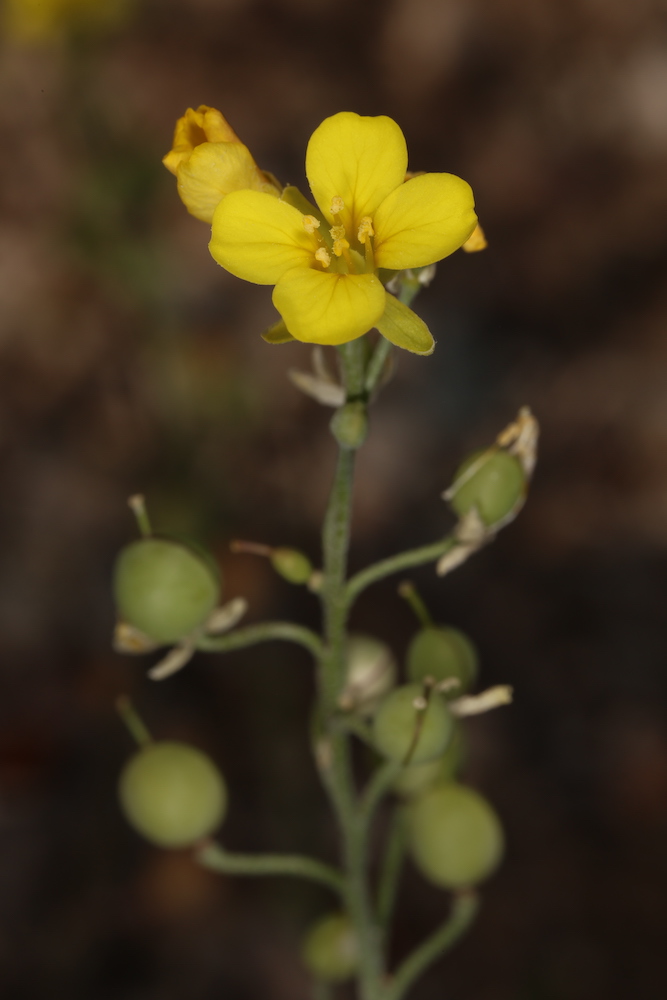
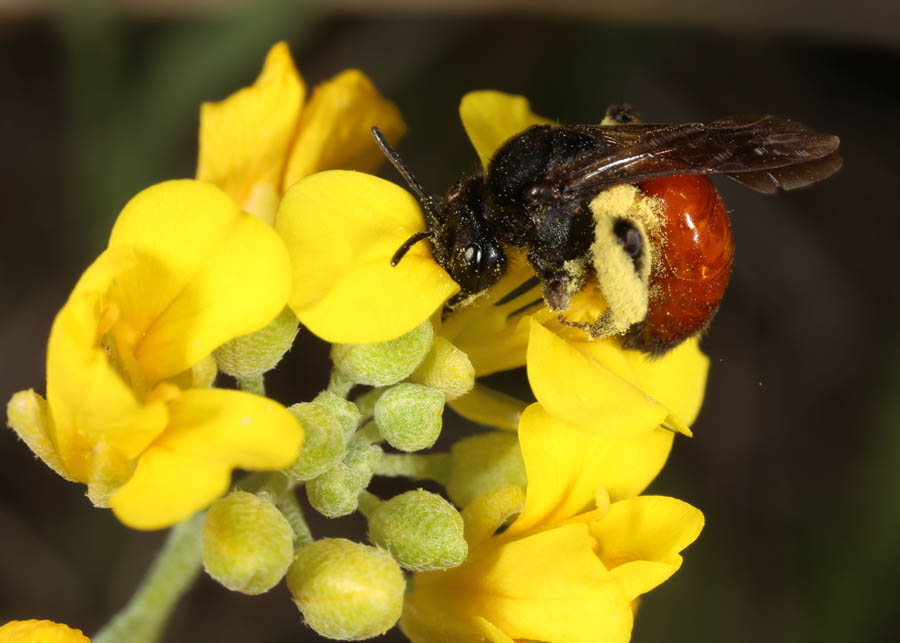

One of the earliest cacti to bloom is Echinomastus erectocentrus, which can bloom in late March or early April. It is a treat to see its pale pink flowers tucked in among the rugged limestone of the Rincon foothills. Littleleaf sumac (Rhus microphylla) and broom milkwort (Polygala scoparioides) are also among the early bloomers, though many people may not notice them. As the temperatures warm, those are followed by yellow mariposa lilies (Calochortus kennedyi) and the incredible blue Cochise beardtongue (Penstemon dasyphyllus).
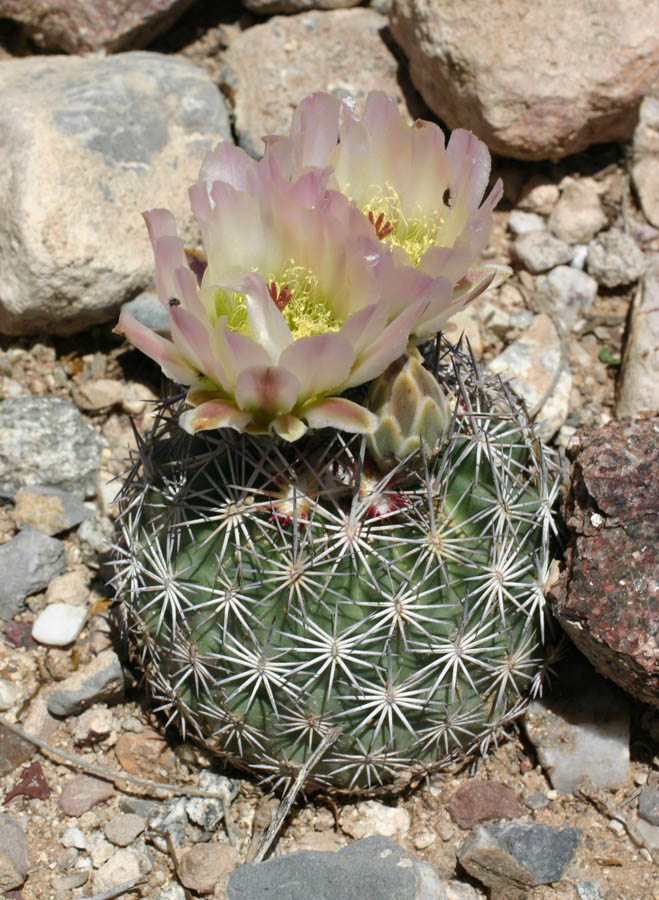


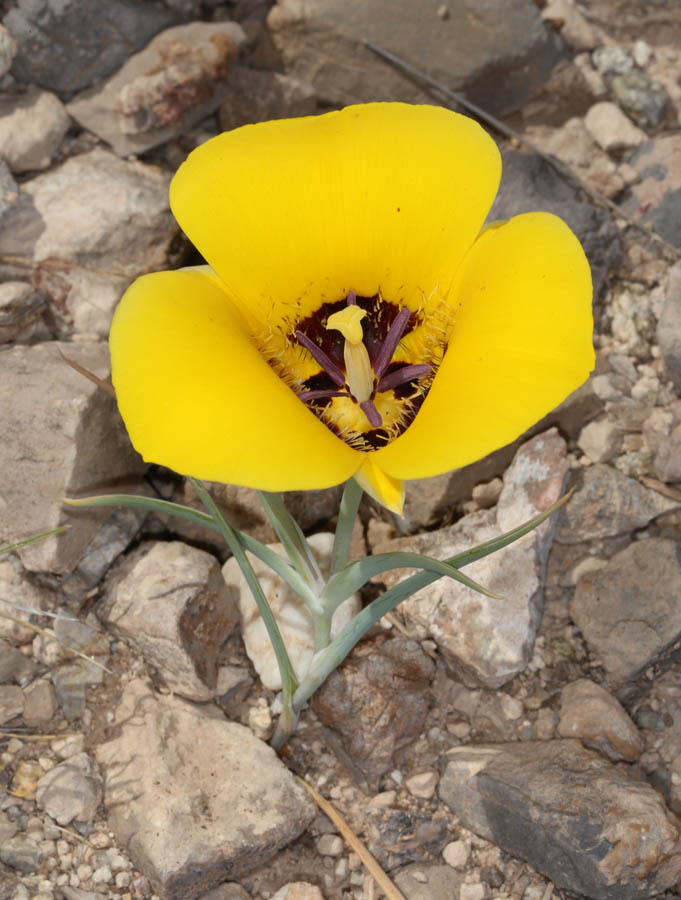
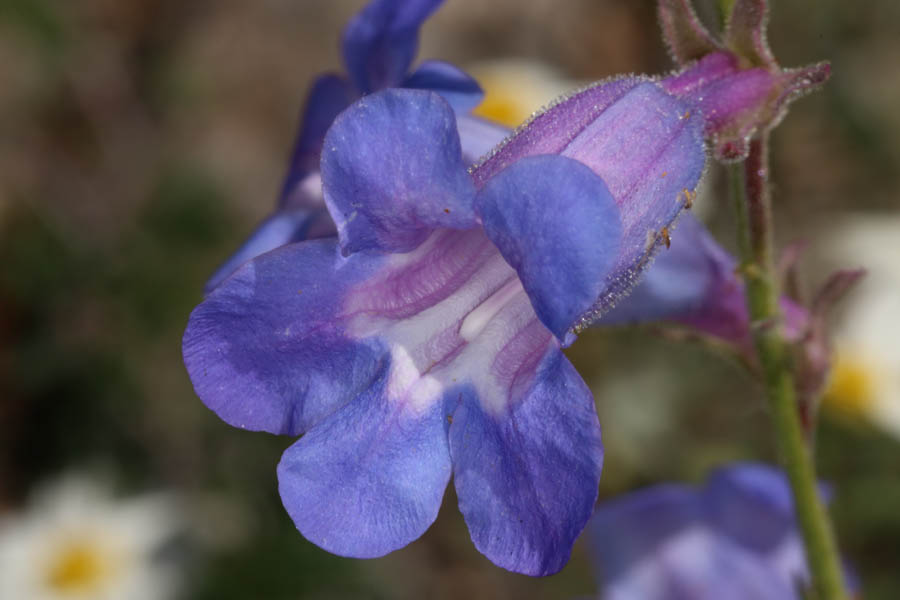
There are easily over 100 species of plants that flower during the spring in this area, so I can only include a tiny fraction of them here. The hillslopes of the Rincon foothills host a succession of large plants putting on a show during March, April, and May. First, the banana yucca (Yucca baccata) is the main show, followed by ocotillo (Fouquieria splendens), followed by foothills palo verde (Parkinsonia microphylla), and lastly, the stately saguaros (Carnegiea gigantea).
Among my favorites though are the less conspicuous, smaller flowers, among them, snapdragon vine (Maurandya antirrhiniflora) and Arizona Wrightwort (Carlowrightia arizonica), which reminds me of a flock of tiny swans taking flight. In shady spots, especially near the banks of washes, Thurber’s desert honeysuckle (Anisacanthus thurberi) attracts brilliant metallic green broadbill hummingbirds.
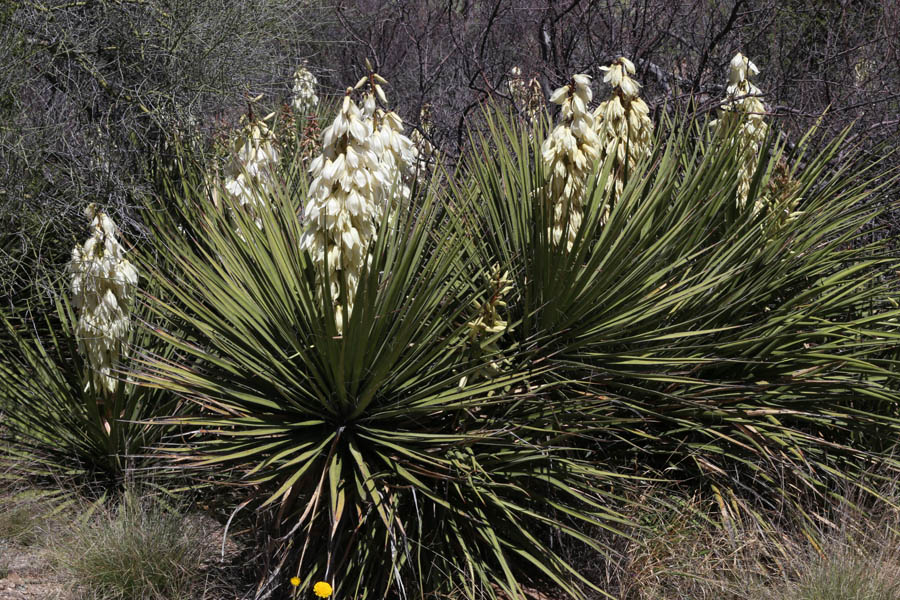
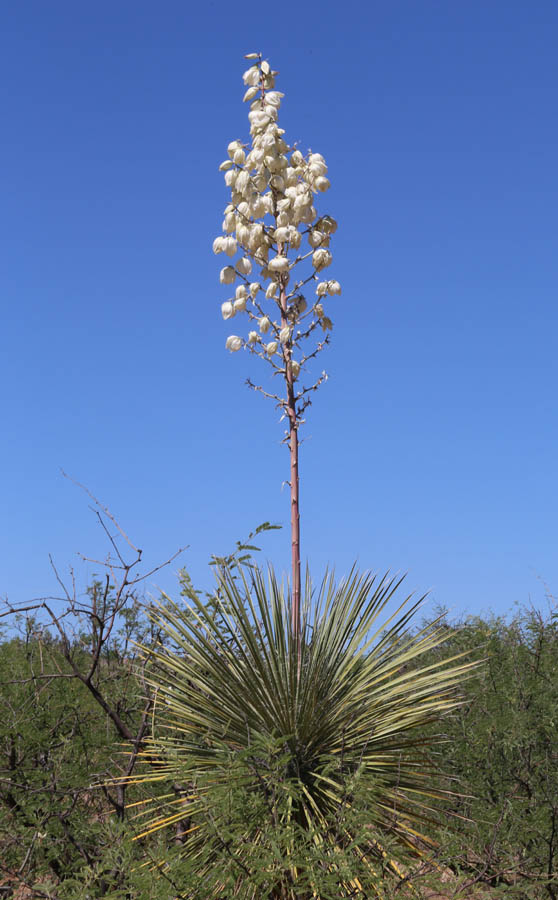
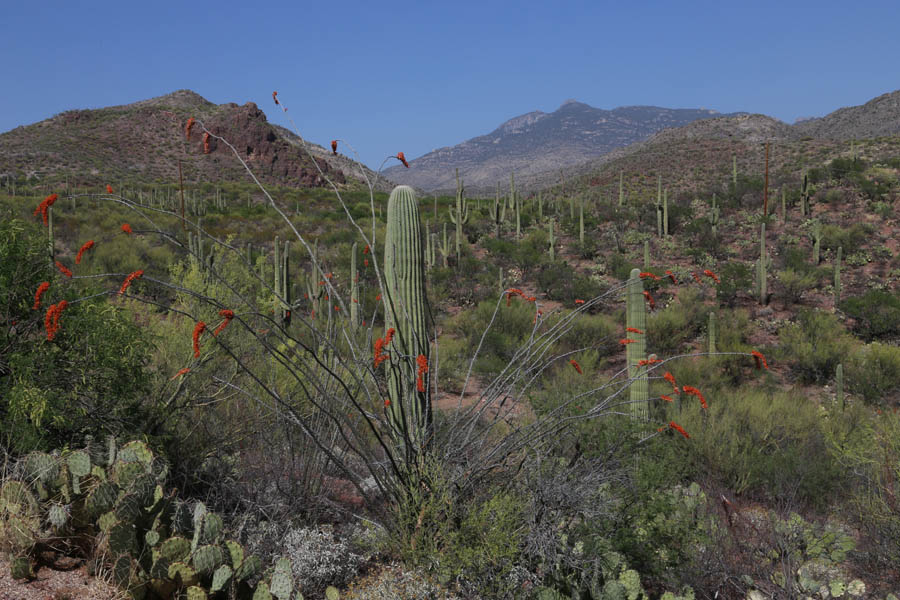


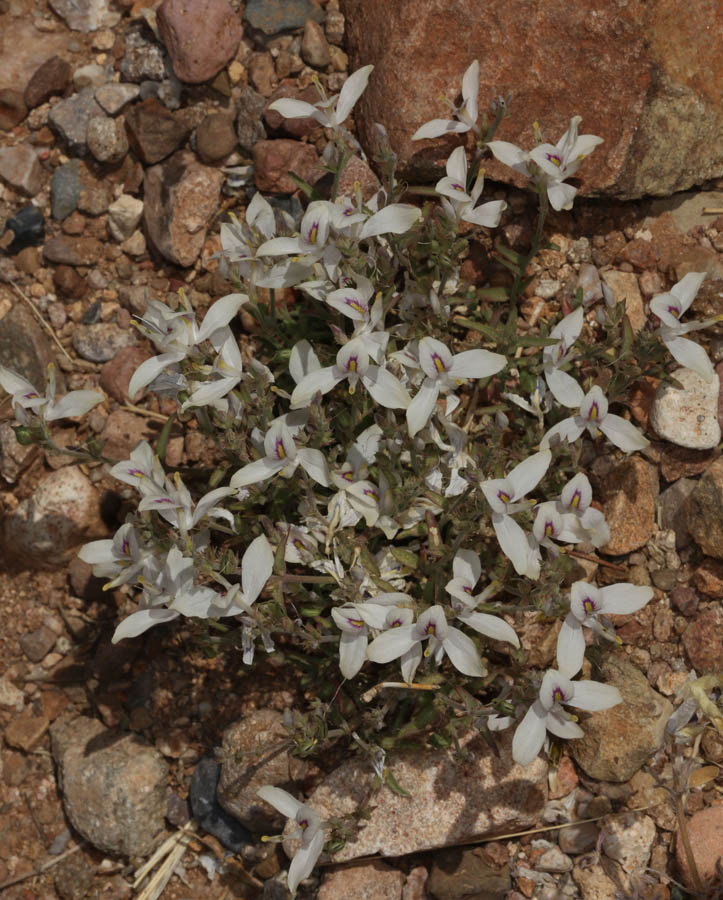
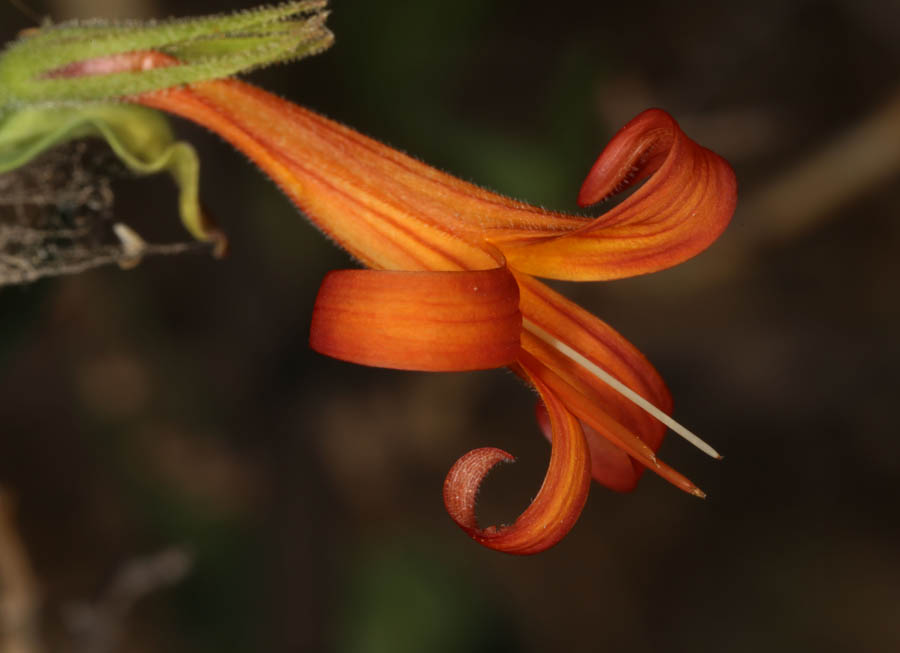
And now South to Santa Cruz County. By late May, the snow of early March seems like a distant memory. Temperatures routinely reach the mid 90’s., and the ephemeral poppies and lupines are long gone. But late May has its own wildflower rewards. Desert willow (Chilopsis linearis), white thorn acacia (Vachellia constricta), prickly poppy (Argemone pleiacantha), saguaro (Carnegiea gigantea), coral bean (Erythrina flabelliformis), and soaptree yucca (Yucca elata) flowers are familiar to many. But other flowers may be less familiar. Among my favorites are kidneywood (Eysenhardtia orthocarpa), because the clusters of white flowers smell like root beer. Another favorite is the rock trumpet (Mandevilla brachysiphon), which smells like gardenias to me. I also love the purple scalystem (Elytraria imbricata) because it has such whimsical looking flowers. Sandbells (Nama hispidum) are another favorite, sometimes forming a mound of purple flowers.


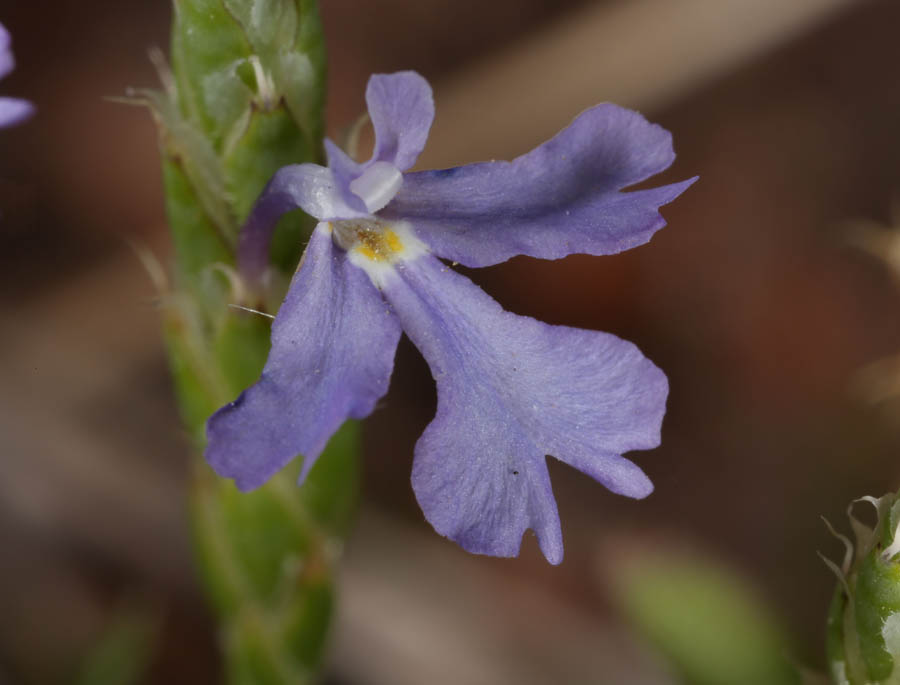

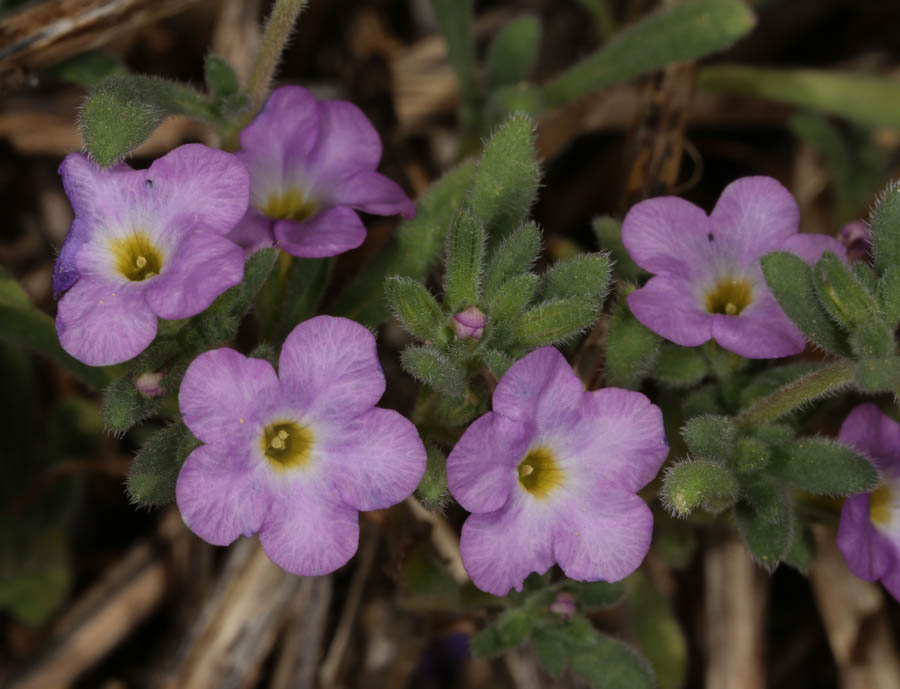
But one special plant had eluded me for all these years: a wild Arizona rainbow cactus (Echinocereus rigidissimus) in bloom. This had long been on my wish list. I always found one just a little too soon or a little too late. This spring, Santa Cruz County granted my wish, with several cacti in full bloom. One especially large specimen had 8 massive flowers. The Arizona rainbow cactus makes a fitting grand finale to this roller coaster ride of spring wildflowers.
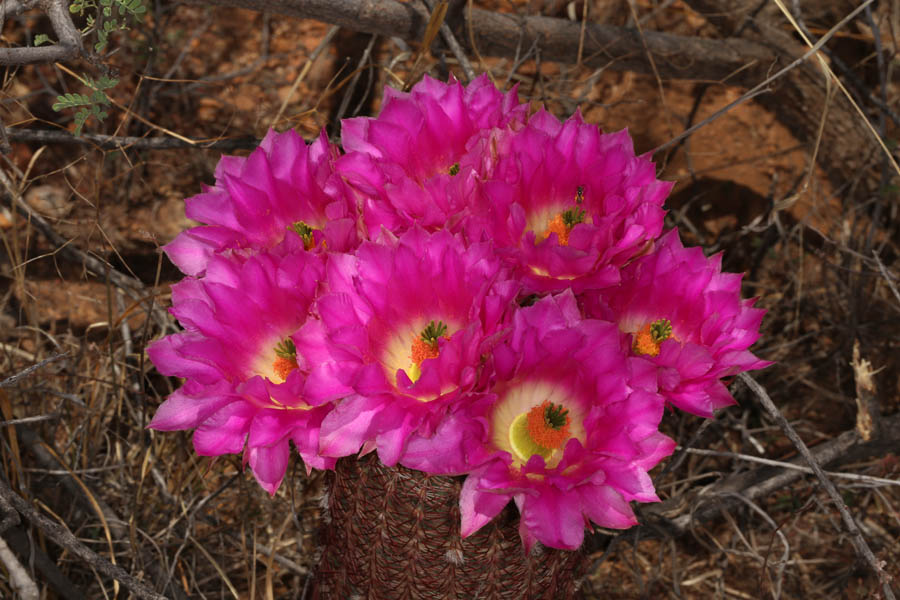
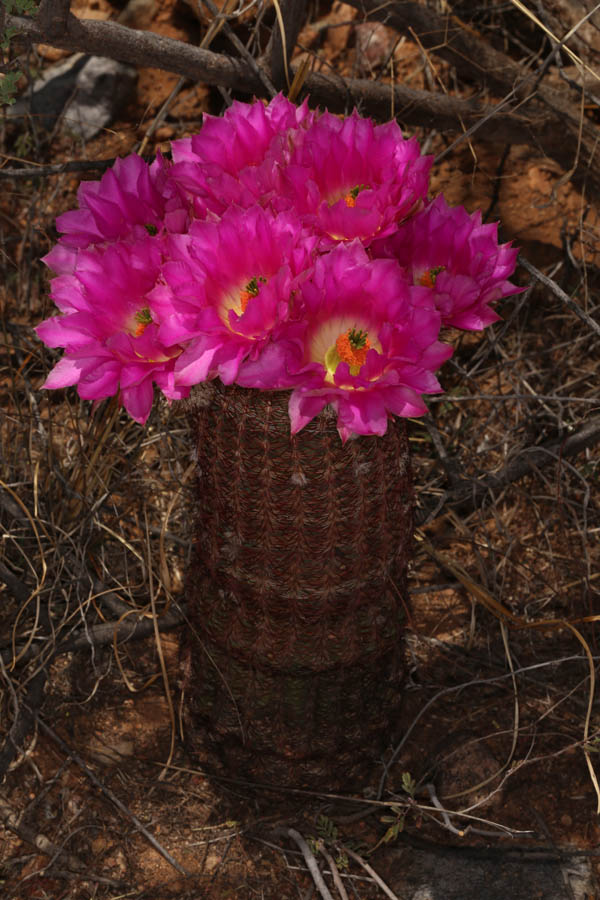
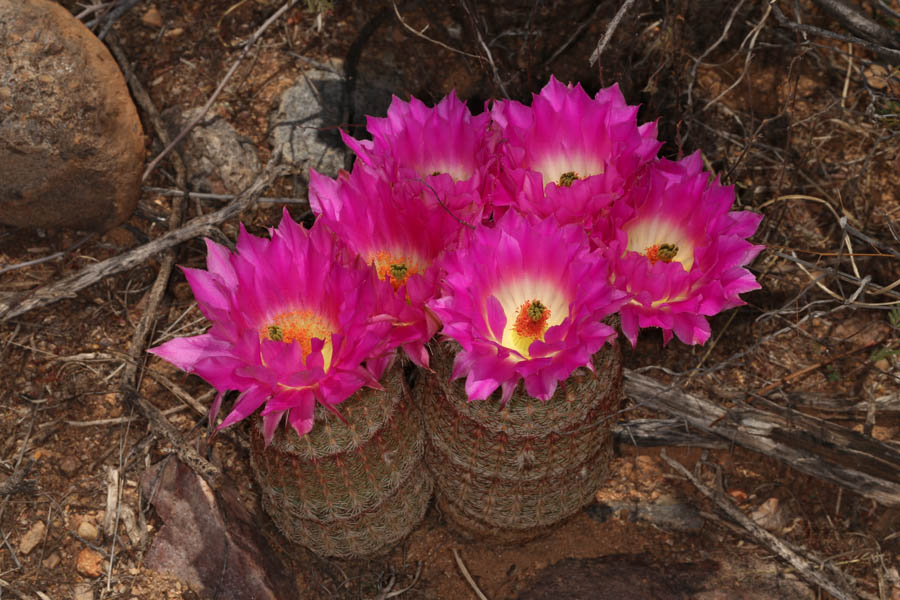
See other parts of my Wild Ride on a Roller Coaster, Spring 2023: Part 1 at Picacho Peak and Part 2 at the Ironwood Mountain Nation Monument.

